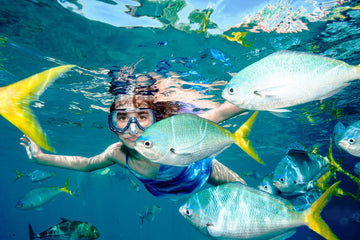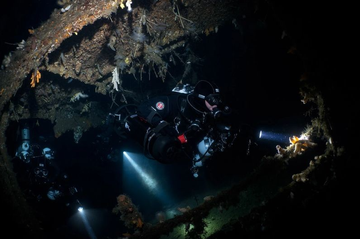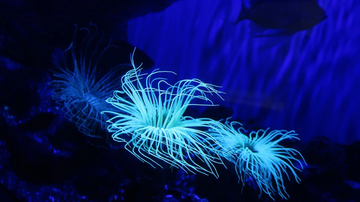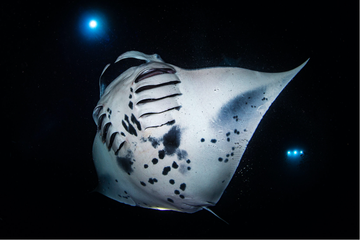Are Deep-Sea Creatures Attracted to Dive Lights? Unveiling the Magic of Underwater Lighting
When you switch on a dive light in the pitch-black ocean depths, the beam cutting through the darkness often reveals small fish gathering around it, and occasionally, mysterious deep-sea creatures lurking at the edges of the light. This spectacle leaves many divers wondering: Are these marine creatures truly drawn to the light? And why do they react this way?
Phototaxis: The Ocean's "Light-Chasing" Instinct
Many marine creatures are indeed attracted to light, a phenomenon scientifically known as "phototaxis." Like moths to a flame, numerous small ocean inhabitants instinctively move toward light sources.
The most classic examples are plankton. These tiny organisms form the foundation of the marine food chain, and many species exhibit strong phototaxis. Scientists believe this behavior may stem from their reliance on light for photosynthesis or their tendency to mistake artificial light for moonlight.
As plankton congregate around the light, they attract small fish that feed on them. Soon, a chain reaction occurs in the food web: small fish attract medium-sized fish, which in turn draw larger predators. This explains why the area around a dive light can suddenly become a bustling hub of activity.
Light-Avoiding Creatures: The Deep-Sea Dwellers Who Shun Brightness
Not all marine life is fond of light. Many deep-sea species, adapted to perpetual darkness, may become disoriented or frightened by sudden illumination.
Cephalopods like octopuses and squid, for instance, typically avoid bright lights. If you shine a light directly on them, you might witness rapid color changes or see them release a cloud of ink before darting away. Some deep-sea fish, such as the infamous anglerfish, live in complete darkness, and intense lighting could temporarily blind them.
The Enchanting World of Bioluminescence
Even more fascinating are the creatures that produce their own light. In the deep ocean, many species have evolved bioluminescent capabilities. Certain jellyfish, shrimp, and small fish emit eerie blue or green glows. When blue dive lights hit some corals, they fluoresce in dazzling displays—nature's own light show.
Scientists have discovered that some deep-sea fish use bioluminescent organs as lures. The female anglerfish, for example, sports a glowing "fishing rod" on her head to attract curious prey. This also explains why flashing dive lights sometimes attract unexpected visitors—they may mistake the light for a potential meal.
Diver's Guide to Responsible Light Use
With this knowledge in mind, divers should follow these guidelines when using underwater lights:
-
Avoid shining bright lights directly into marine creatures' eyes, as this may harm them.
-
Consider using red light mode in sensitive areas like coral reefs.
-
Turn off unnecessary lights after photography sessions.
-
Maintain a respectful distance and avoid chasing animals with lights.
Marine biologists remind us that while dive lights are essential exploration tools, excessive or improper use can disrupt marine life. Just as we follow the "take only photos, leave only bubbles" principle underwater, we must learn to coexist harmoniously with ocean inhabitants.
On your next night dive, take time to observe the underwater world illuminated by your light—but remember to be a responsible "light chaser." You may find that when used thoughtfully, dive lights reveal marine life at its most natural and magical.






fu48wa
m3kbrv
16pabn